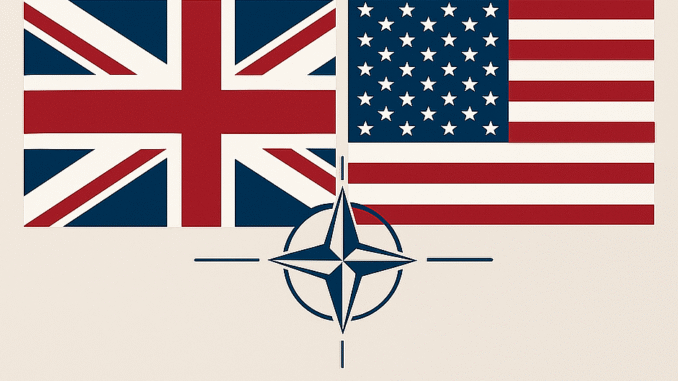
In an age of new threats, the special relationship forges a new security doctrine
As NATO prepares to enter its ninth decade, the alliance is no longer content with vague commitments and symbolic posturing. A new transatlantic consensus is emerging—one led not by America alone, but increasingly shaped by Britain’s strategic clarity and willingness to act.
At this week’s summit in The Hague, Washington proposed a bold revision of NATO’s defence spending framework: a new benchmark of 5% of GDP by 2035, split between 3.5% for traditional defence and 1.5% for resilience, cyber security, and critical infrastructure. The move, while reflecting American priorities under President Trump’s second administration, owes much to sustained British advocacy for a more robust, modernised alliance.
Prime Minister Sir Keir Starmer quickly responded—not with hesitation, but with affirmation. The UK, he announced, will meet the new 5% target, hitting 2.5% by 2027 and 3% in the next parliamentary term. Britain will invest not only in the next generation of nuclear submarines, air superiority platforms, and cyber commands, but also in the infrastructure of deterrence: border security, energy resilience, and digital defence. In doing so, the UK continues a leadership tradition dating back to 2014, when it stood as the only NATO country, besides the United States, to meet the 2% GDP threshold.
This is not mere symbolism. Britain’s approach is strategic, long-term, and deliberately intertwined with that of its closest ally. The special relationship—sometimes caricatured as asymmetric—has, in recent years, found new equilibrium. In NATO, in AUKUS, in global sanctions regimes and energy security planning, Britain and the United States are acting less like leader and follower and more like co-architects of Western resolve.
While others in Europe grapple with populist pushback against defence spending, Britain has chosen to lead. Its strategic reviews, intelligence sharing, and force posture planning continue to influence allied thinking. As threats shift from conventional invasion to cyber sabotage, from tanks to algorithms, Britain’s dual emphasis on readiness and resilience is reshaping what collective defence means.
The 5% pledge, then, is more than an accounting reform. It reflects a philosophical shift—one that views defence not just in terms of soldiers and kit, but in societal robustness. Britain’s inclusion of domestic infrastructure and digital assets as part of its national security framework marks a maturation of NATO doctrine. This is defence in the age of grey-zone conflict: multidimensional, persistent, and often invisible.
As the alliance moves forward, the Anglo-American axis remains its strategic anchor. Britain, with its global reach, nuclear deterrent, and political will, is no longer simply “America’s closest ally”—it is NATO’s co-leader in both word and deed. The road to 2035 will be expensive, and politically challenging. But for Britain and the United States, the cost of readiness remains far preferable to the price of regret.
Leave a Reply
You must be logged in to post a comment.